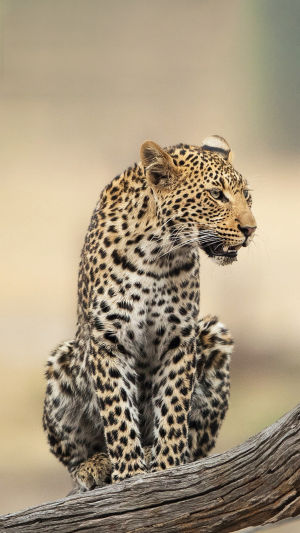The cheetah, also known as the hunting leopard, is a type of cat and the only species in the genus Cheetah. Unlike other cats, cheetahs rely on speed to hunt, rather than sneak or pack aggression. Cheetahs are the oldest, most unique, and most specialized species of the cat family.
In ancient times, the cheetah's habitat extended to Africa, Asia, and India, and even reached Europe and North America during the Ice Age. Today, cheetahs are mostly found in sub-Saharan Africa, with a small number of cheetahs found in Asia.
Cheetahs have tan fur with black spots. The spots on each cheetah are unique and are said to number between 2,000 and 3,000. The cheetah's coat color and spots provide a natural protective color, making it well-hidden in the grassland.
Cheetahs live a relatively regular life, usually hunting at sunrise and resting at sunset. They typically start to look for food around five o'clock in the morning. While walking, they are more alert, stopping from time to time to look around for potential prey.
In addition, this is also to prevent other predators from attacking. Cheetahs usually rest at noon and when they nap, they get up every six minutes to check for any potential dangers.
Unlike lions, tigers, and leopards, which belong to the genus in the subfamily Panthera, cheetahs are relatively weak in combat. People often say that cheetahs are not good fighters, and sometimes even pretend to be honey badgers to scare off predators, but this rumor has not been confirmed.
However, their claws are similar to those of dogs, and it is true that they lack the fleshy claw sheaths of other cats. Cheetahs do not have strong claws, their bite force is average, and the length of their canine teeth is also very average. This means that they cannot become the dominant predators.
Cheetahs are the fastest running mammals in the world. When a cheetah sprints at full speed, each stride can reach 21 feet, which is between 6 and 7 meters. Every time a cheetah chases its prey, it consumes a lot of energy, and its respiratory and circulatory systems are overloaded.
This makes them generally limited to a distance of about 200 meters in chasing prey, which lasts no more than one minute.
Cheetahs have been on this planet for 1-2 million years and were once widely distributed in Africa and Asia. Cheetahs are greatly affected by food availability in pastoral areas. In the North African region, natural densities of cheetahs are low.
The evolution and history of the cheetah are as compelling and interesting as the species itself. The evolution of this species dates back nearly 7 million years and spanned nearly all continents on Earth. Its history of interacting with humans dates back to 32,000 BC.
Throughout thousands of years of human history, the cheetah has been a symbol of great significance in different civilizations and cultures. Today, the cheetah is still considered a spirit animal, symbolizing several positive traits such as adaptability, perseverance, and focus.
Hunting is a key threat to cheetahs. Additionally, animal skin trading still occurs in some places, which has greatly reduced the number of cheetahs. In particular, the cheetahs in the Asian region are almost extinct.





